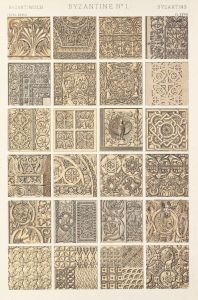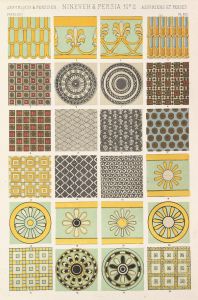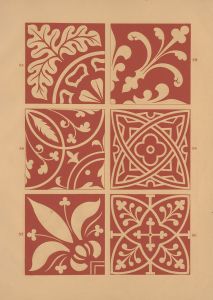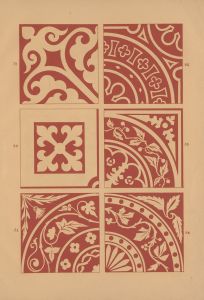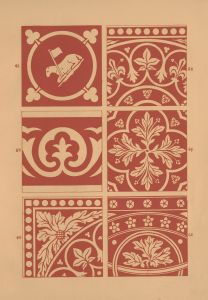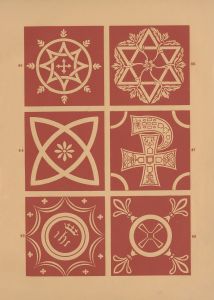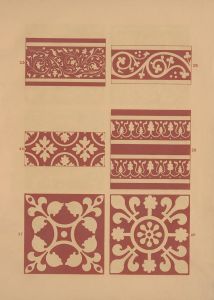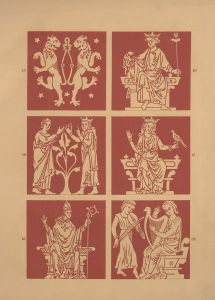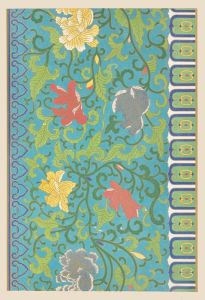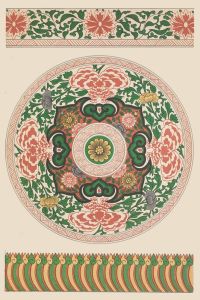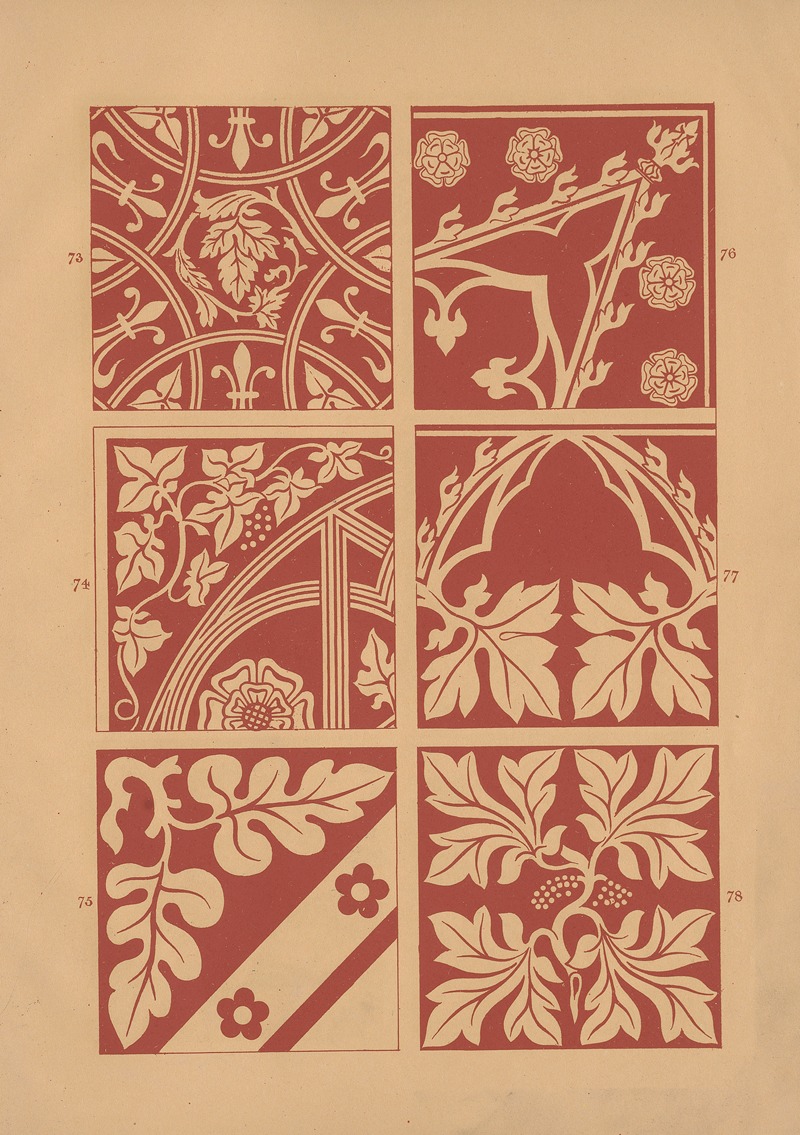
Examples of encaustic tiles Pl.12
A hand-painted replica of Owen Jones’s masterpiece Examples of encaustic tiles Pl.12, meticulously crafted by professional artists to capture the true essence of the original. Each piece is created with museum-quality canvas and rare mineral pigments, carefully painted by experienced artists with delicate brushstrokes and rich, layered colors to perfectly recreate the texture of the original artwork. Unlike machine-printed reproductions, this hand-painted version brings the painting to life, infused with the artist’s emotions and skill in every stroke. Whether for personal collection or home decoration, it instantly elevates the artistic atmosphere of any space.
"Examples of Encaustic Tiles Pl.12" is a notable illustration by Owen Jones, a prominent British architect and designer of the 19th century. Jones is best known for his work in color theory and his influential publication, "The Grammar of Ornament," which was first published in 1856. This comprehensive work is a collection of design principles and patterns from various cultures and historical periods, and it played a significant role in the development of design aesthetics during the Victorian era.
Owen Jones was a key figure in the decorative arts, and his work often emphasized the importance of color and form in design. "Examples of Encaustic Tiles Pl.12" is one of the many plates included in "The Grammar of Ornament." This particular plate showcases the intricate designs and vibrant colors characteristic of encaustic tiles, which were widely used in the 19th century for flooring and wall decoration.
Encaustic tiles are ceramic tiles that feature patterns created by different colors of clay rather than a surface glaze. This technique allows the pattern to remain intact even as the tile wears down over time. The method of making encaustic tiles dates back to the medieval period, but it saw a revival during the Gothic Revival movement in the 19th century, a period during which Owen Jones was actively working.
Jones's illustration of encaustic tiles reflects his interest in historical design and his commitment to reviving traditional craftsmanship. The designs in Plate 12 are characterized by geometric patterns and floral motifs, which were common in Victorian tile design. These patterns often drew inspiration from medieval and Gothic art, aligning with the broader Gothic Revival movement that sought to bring back the artistic styles of the Middle Ages.
In "The Grammar of Ornament," Jones aimed to provide a comprehensive resource for designers and architects, offering them a wide array of decorative motifs from different cultures and historical periods. His work was influential in promoting the idea that design should be both functional and beautiful, and that it should draw from a rich tapestry of historical and cultural influences.
Jones's emphasis on the use of color and pattern in design had a lasting impact on the decorative arts. His work encouraged a greater appreciation for the aesthetic qualities of everyday objects and spaces, and it helped to elevate the status of decorative arts within the broader field of design.
"Examples of Encaustic Tiles Pl.12" is a testament to Owen Jones's dedication to the study and revival of historical design techniques. It serves as an example of how traditional methods can be adapted and appreciated in new contexts, and it highlights the enduring appeal of well-crafted, beautifully designed objects. Through his work, Jones not only preserved historical design practices but also inspired future generations of designers to explore and innovate within the field of decorative arts.





